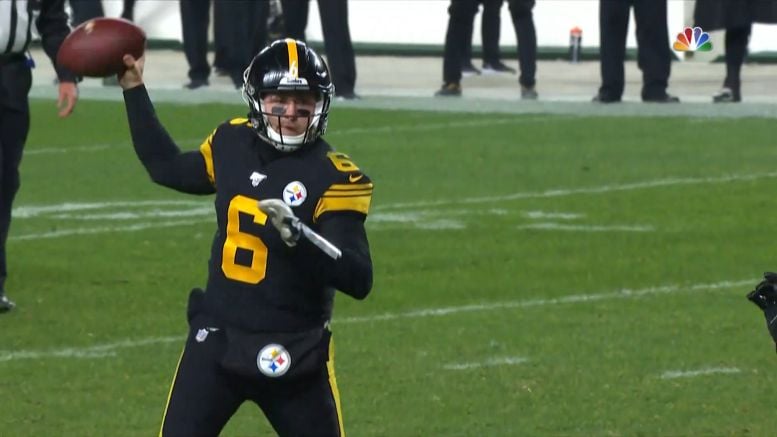It’s interesting that there was somewhat of a perception that Devlin Hodges was a gunslinger sort of quarterback. well, perhaps he is, to some degree, but the productivity doesn’t show it. As Pro Football Focus’ numbers here present, the Pittsburgh Steelers rookie quarterback had among the shallowest average depths of target per completion in the NFL last season.
To translate this into more simple terms, average depth of target per completion is an indicator of how far down the field a quarterback throws on passes that he is able to complete. Generally, you want this number to be longer, though some quarterbacks more than others may favor shorter completions by design as a part of their offense.
Still, Hodges averaged just 4.8 air yards per completion last season. This was a product of a heavy dose of short passes and a failure to connect on deep passes. As we’ve talked about earlier this year, for example, James Washington was among the league leaders in deep-pass incompletions that were the fault of the quarterback, and Duck was on the other end of many of those.
The only two quarterbacks who had a lower average depth of target per completion last year were Denver Broncos rookie Drew Lock, who was injured for some time during the year, and Teddy Bridgewater—though it should be noted that the latter earned a starting job for himself in Carolina thanks to his success with the Saints while Drew Brees was injured.
Lowest average depth of completion in 2019:
▫️ Derek Carr – 5.2
▫️ Devlin Hodges – 4.8
▫️ Drew Lock – 4.8
▫️ Teddy Bridgewater – 4.7 pic.twitter.com/vEPh6tVEuQ— PFF (@PFF) July 5, 2020
Bridgewater played in nine games last year, starting five. He completed 133 of 196 pass attempts for 1384 yards, throwing nine touchdowns to two interceptions. Despite the low average depth of target per completion, he still posted 7.1 yards per pass attempt, and 10.4 yards per completion. He totaled 632 air yards on completions, with 752 yards after the catch.
For Hodges, while he still managed 10.6 yards per completion, he only averaged 6.6 yards per attempt. Of his 1063 passing yards, 482 were air yards, with 581 yards coming after the catch. Washington got a bunch of those yards after the catch for him, including on a 79-yard touchdown. The two actually connected on six deep passes for 30 or more yards—all of his 30-plus-yard completions. He managed to throw five passes for negative yards.
But as this should indicate, a low average depth of target per completion doesn’t necessarily guarantee a poor performance, even if it is an indicator. Even the most conservative passing game still takes shots down the field, and when they do, they’re more likely to connect because they’re more selective.






